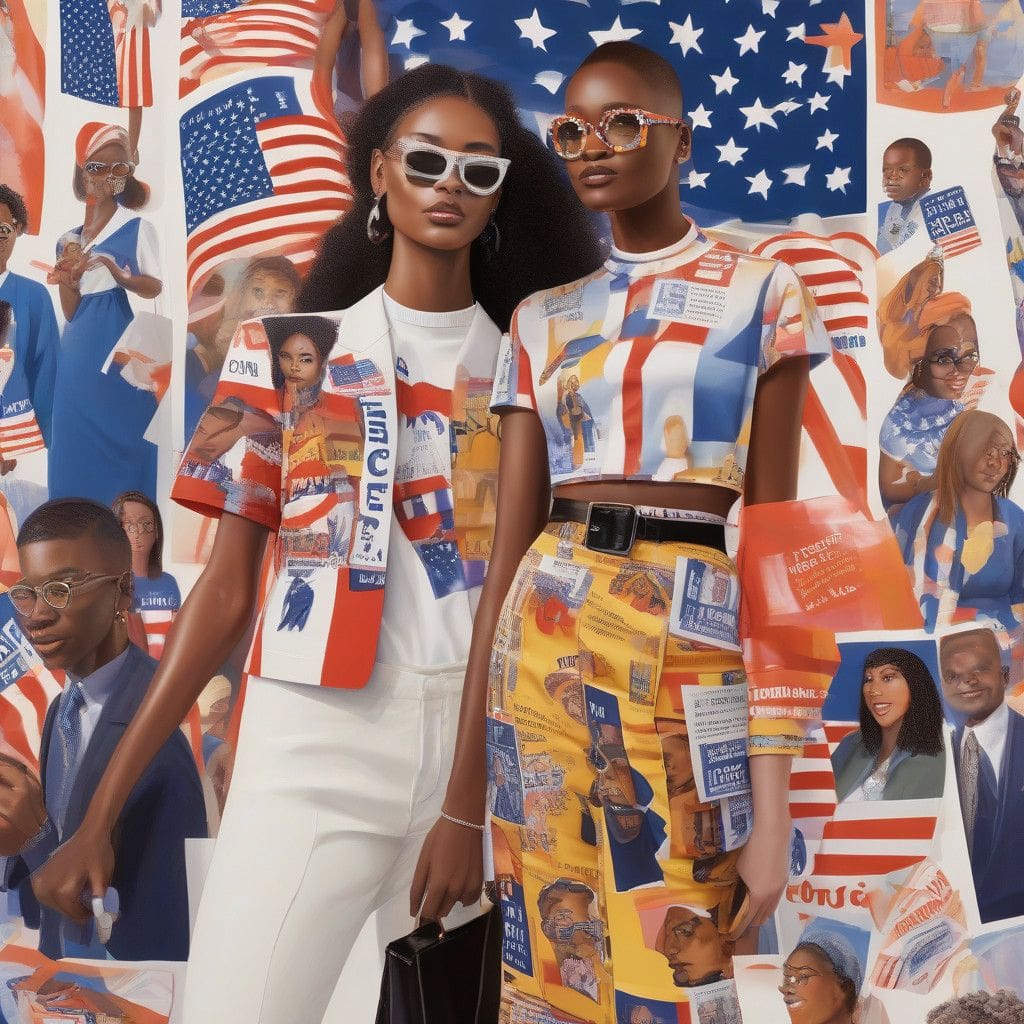As the US presidential election approaches, the fashion industry is delicately navigating the turbulent political waters. Many brands have chosen to remain neutral, abstaining from overt political endorsements. Instead, their engagement mainly centers around broad calls to action, such as “vote” campaigns. This trend echoes a cautious approach taken by many industries in a time of divisive partisan politics.
Prominent figures within the industry, such as Willy Chavarria, have made notable exceptions. Chavarria’s collections often feature references to migrant workers, and his partnership with the American Civil Liberties Union signals a willingness to address social issues directly. Similarly, Anna Wintour, the influential Vogue editor, has long supported Democratic fundraising efforts, even hosting an event for Kamala Harris this past August in collaboration with Tory Burch. Luxury conglomerate LVMH demonstrates a more balanced approach with connections to both major parties; CEO Bernard Arnault attended a Biden-hosted dinner, while Alexandre Arnault, a Tiffany executive and Bernard’s son, famously visited Trump’s Mar-a-Lago.
The reluctance to take a stand can be attributed to fears of alienating customers in an already polarized market. The escalation of political tensions seems to have incentivized a retreat from the bold social stances observed in 2020. The potential of a second Trump presidency looms large, intensifying the stakes for brands. Trump has historically used political leverage to reward supporters and penalize those he views as adversaries, creating a chilling effect that discourages outright political activism.
While public displays of political allegiance are subdued, behind the scenes, companies are preparing for possible consequences of the election outcome. The implications of the American vote extend far beyond its borders; they resonate throughout the global fashion supply chain.
Should Kamala Harris be elected, the industry can expect continuity in policies that have been established under President Biden. Most notably, her approach to economic and trade policies would likely mirror Biden’s, which have generally favored international collaboration and global supply chains. In contrast, Trump’s administration has been marked by his commitment to imposing tariffs on a vast selection of imported goods. This possible shift in policy poses substantial risks to the fashion industry, which heavily relies on imports for manufacturing apparel, accessories, and footwear.
For instance, in a recent interview with The Washington Post, the CEO of Columbia Sportswear underscored the potential difficulties ahead, stating, “We’re just going to deal with it and we’ll just raise the prices.” Such a response may become common across brands as they face the dual challenge of rising production costs due to tariffs and inflationary pressures already influencing consumer purchasing behaviors.
On the consumer front, tax cuts promoted during Trump’s first term may incentivize spending, potentially offsetting the financial pressures that tariffs would impose on imported goods. However, this scenario is contingent upon bipartisan support, which remains uncertain in a divided Congress.
Climate policies are another area of concern. A Trump victory would likely bring an abrupt reversal to the climate initiatives advanced under the Biden administration. The fashion industry, which has faced growing scrutiny over its environmental impact, might find itself facing heightened challenges if global emissions targets are scaled back. While European regulations pushing for sustainability remain in place, a more lenient US policy could alter the competitive landscape for global brands, weakening the impetus to adopt greener practices domestically.
The unpredictable nature of the upcoming election raises several questioning scenarios for industry stakeholders. Will Trump pursue his previous immigration policies, such as mass deportations? How will he address ongoing international conflicts? Furthermore, the prospect of Trump refusing to accept an election defeat raises concerns about civil unrest should he not secure a victory.
The current uncertainty is underscored by polls that indicate a neck-and-neck race, making the outcome difficult to predict. As a result, industry leaders recognize that the ramifications of this election may not only linger beyond election night but could extend for months as new policies emerge or existing ones are dismantled.
Ultimately, the stakes for the fashion industry are more than just about clothing; they encompass a broader narrative tied to economic policies, international trade, and climate change. As the polling date approaches, the choices made by American voters will send ripples throughout the global market, influencing both immediate strategies and long-term shifts within the fashion landscape.












